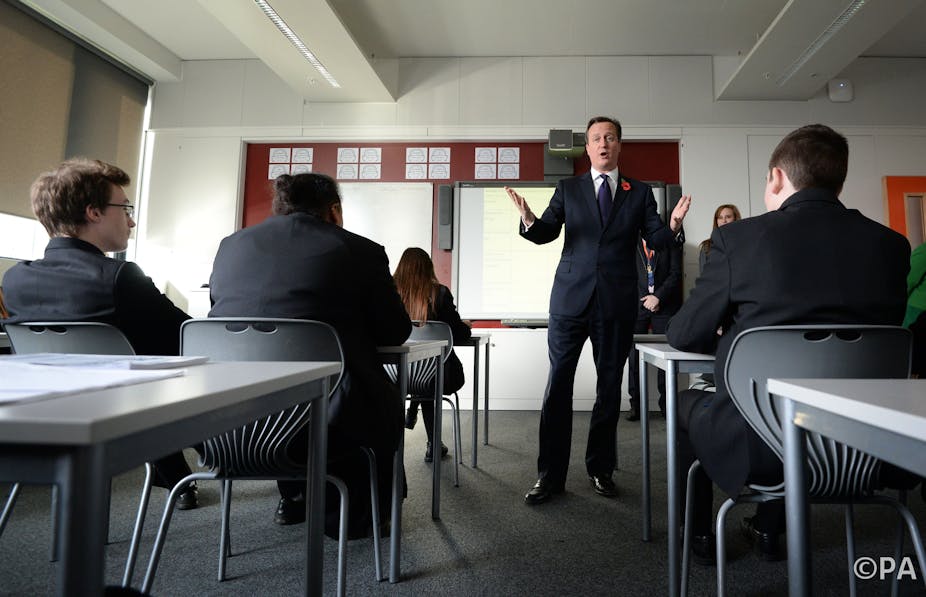It is not yet possible to tell whether the government’s flagship academies policy has been “a positive force for change” in the English education system. That’s the finding of a long-awaited report by MPs on the Education Select Committee into academies and free schools.
The report is likely to be used as political ammunition ahead of the general election by those concerned with the high speed of the reforms and lack of transparency in how academies and free schools are being run.
According to Ofsted data quoted in the report, between 2008 and 2013, the number of pupils in England attaining five A* to C grades at GCSE rose from around 48% to around 61% – and there were similar increases in other parts of the UK. Over the same period, attainment at new sponsored-academies has risen by about the same extent.

The rise in the number of academies since the Coalition came to power in 2010 has been predominantly in these sponsored academies – when a trust, private school or company decides to sponsor a new state-funded school. These sponsored academies are often in disadvantaged areas, which still have attainment levels that are substantially below the national average.
Free schools, which are set up by an organisation outside local authority control, and converter academies, which have converted from local authority control into academies, are often in more advantaged areas. The MPs concluded that it is too soon to tell whether these new types of schools are increasing the attainment of their pupils or not.
They also said that there is: “at present no convincing evidence of the impact of academy status on attainment in primary schools.”
The implication here is that the rise in attainment is general and not the preserve of academies. There is, as every robust analysis has shown, no evidence that academies are more effective at producing better grades with equivalent pupils from the same socio-economic backgrounds.
Watch the spin
Yet the press announcement about the report and some of the top and tail of it suggest a very different interpretation. The committee’s headline findings are that: “Competition from the academy model may be driving improvement in English schools”. The report concludes:
One of the benefits of the expansion of academies has been the opportunity to develop competition between the providers of oversight, support and intervention systems for schools, whether they are academy chains or local authorities.
The progress of all schools, whether academies or not, is therefore being attributed to the success of academies. And the argument is that competition provided by academies is driving “bog standard” comprehensives to succeed.
There is no evidence for this. Indeed there is considerable evidence the other way – such as the fact that the annual improvement in GCSEs is long-term and started well before the first academy was opened under the previous Labour government in 2002.
It is as though the final editor of the report needed to show somehow that academies were more successful than the rather derided local authority schools they were brought in to replace. And they had to clutch at straws.
School intake remains key

The reality is that we genuinely do not know whether the annual growth in GCSE scores since the exams were introduced in the 1980s is due to a real rise in the quality of pupil work or a lowering of exam standards. In a sense, it is pointless to argue either way since there is so little contemporary external evidence of the underlying standard of learning to calibrate the changes with. All we can say is that the introduction of academies coincided with the second half of that period, from 2002 onwards.
Yet two points about academies have become clear. First, the nature of their pupil intakes is distinct from that of the schools around them. Sponsored academies have even more disadvantaged pupil intakes than the local authority schools in the area around them, while converter academies and free school have much less disadvantaged intakes. This means that areas with converter academies have highly socially segregated school intakes, akin to areas with grammar schools. Such segregation of social groups causes considerable damage to the education system.
It is also clear that the pupil intakes, even to sponsored academies, have been changing in their nature over time. On average, their level of disadvantage has dropped. For the sponsored academies this is a good thing, because it brings them closer to the average for their area and so reduces social segregation.
But of course, this means that for all academies, the increase in their GCSE scores have not been achieved with anything like the equivalent socio-economic level of pupils to those that they started with. This is not school improvement as it is widely understood.
Click here to read more on academies on The Conversation.

